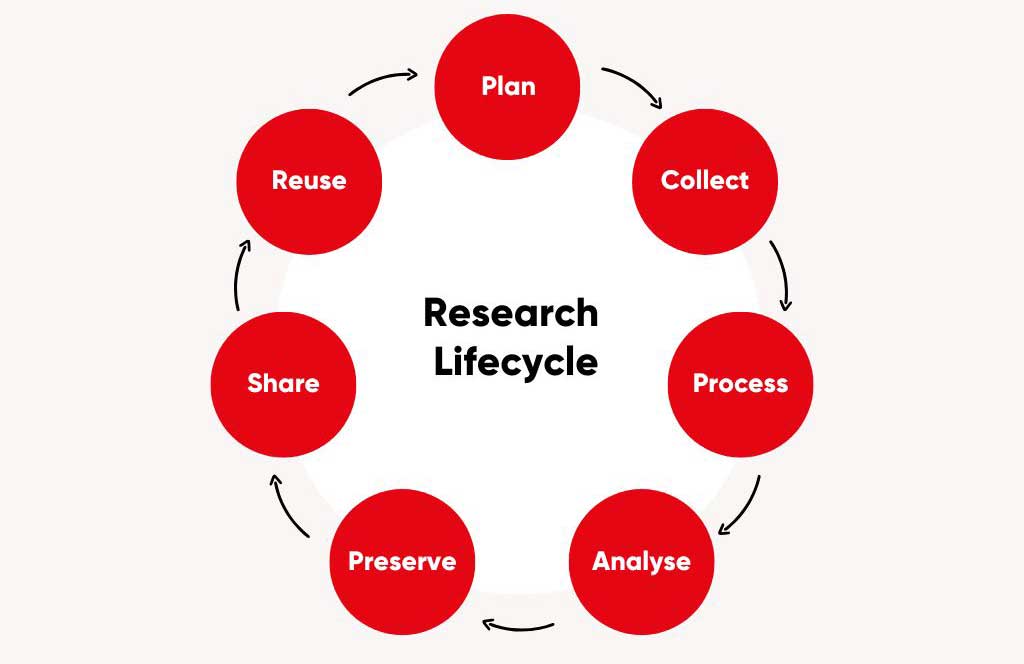Understanding Medical Research in Aortic Dissection
Medical research is a structured process aimed at uncovering new knowledge, improving treatments, and shaping healthcare practices. In aortic dissection research, understanding how studies are designed, conducted, and shared can help you contribute more effectively as a Patient and Public Involvement (PPI) member.
One useful way to think about medical research is as a research lifecycle, where data is collected, processed, analysed, and used to drive meaningful change. Below is an overview of the key stages in this lifecycle and how they apply to aortic dissection research.
The Research Lifecycle

1. Planning the Research
Before any study begins, researchers must define their research question and decide what data they need to collect. In aortic dissection research, this could involve investigating:
✔ How patients experience delays in diagnosis.
✔ The effectiveness of different surgical or medical treatments.
✔ Long-term outcomes for patients after an aortic dissection.
A data management plan is also created at this stage, outlining how patient data will be collected, stored, and protected. Many research funders require this plan to ensure ethical and responsible research.
2. Collecting Data
At this stage, researchers gather information through various methods, such as:
✔ Patient surveys or interviews about their experiences.
✔ Clinical trials testing new treatments or management strategies.
✔ Reviewing hospital records or imaging data.
As a PPI member, you may help shape how data is collected to ensure it is patient-friendly and relevant to real-world experiences.
3. Processing the Data
Once collected, data needs to be cleaned and organised before it can be analysed. This step involves:
✔ Removing errors or incomplete responses.
✔ Combining data from different sources, such as medical records and patient feedback.
✔ Converting information into a format that can be easily interpreted.
Understanding how data is processed helps ensure that research findings are accurate and reliable.
4. Analysing the Data
This is where researchers examine the data to uncover patterns and insights. For example, they may look at:
✔ How different treatments impact survival rates.
✔ Whether there are disparities in care based on geography or demographics.
✔ The effectiveness of lifestyle changes in preventing future complications.
Researchers document their methods so that others can verify and build upon their findings. As a PPI member, you can help ensure that research conclusions are relevant and understandable to patients.
5. Preserving the Data
Research data must be stored securely for future use. In aortic dissection studies, this could mean:
✔ Keeping anonymised patient records for long-term analysis.
✔ Storing imaging scans or genetic data for future research.
✔ Ensuring confidential information is protected.
Proper data preservation allows findings to be revisited and reassessed as new medical knowledge emerges.
6. Sharing Research Findings
For research to make an impact, it must be shared with the right audiences. This includes:
✔ Publishing results in medical journals.
✔ Presenting findings at conferences.
✔ Creating patient-friendly summaries so those affected by aortic dissection can understand the latest research.
PPI members can help researchers communicate findings in ways that are accessible and meaningful to patients and the wider public.
7. Reusing Data for Future Research
Research does not end once a study is published. Findings can be used to:
✔ Confirm previous results in larger studies.
✔ Develop new treatments based on earlier discoveries.
✔ Inform healthcare policies to improve patient care.
Aortic dissection research is constantly evolving, and patient involvement ensures that future studies continue to address real patient concerns.
Why This Matters for PPI Members
Understanding how research is conducted enables you to:
✔ Ask informed questions when reviewing studies.
✔ Challenge assumptions and ensure research is patient-focused.
✔ Help shape future research priorities based on real-world experiences.
By being part of the research process, you play a crucial role in improving care, influencing treatment guidelines, and ensuring that aortic dissection research leads to meaningful change.